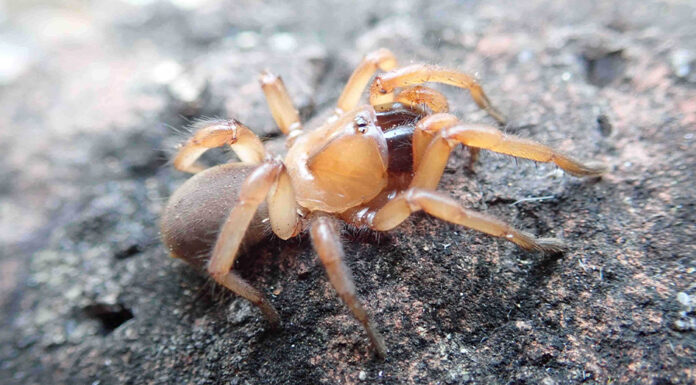New Masters of the Spider World: Kimberley Trapdoor Discoveries Redefine Local Biodiversity
In a discovery that is as remarkable as it is unexpected, a team of University of Western Australia (UWA) scientists has uncovered two entirely new species of trapdoor spiders in the rugged terrain of the Kimberley region. The identification of Kwonkan fluctellus and Kwonkan nemoralis marks the first known occurrence of these particular arachnids in northern Australia, expanding our understanding of both regional biodiversity and the ingenuity of spider engineering.
A Field Expedition into the Kimberley Wilderness
During an Australian Government-supported Bush Blitz expedition in 2022, a group of researchers led by postdoctoral fellow Dr Jeremy Wilson of UWA’s School of Biological Sciences ventured into remote parts of the Kimberley, a landscape more commonly associated with expansive savannahs than the hidden micro-environments that often harbour nature’s secrets. Instead of stumbling across the expected arid terrains, the team discovered pockets of richer forest nestled deep within gorges where moisture lingers and a distinct palette of plant life thrives. It was in these secluded forest patches that the team came upon specimens of Kwonkan nemoralis.
An Unusual Architectural Marvel
Unlike many trapdoor spiders that construct relatively simple burrows with open entrances, the newly discovered species exhibit an extraordinary burrow design that would make a seasoned engineer take notice. Along a small creek in sandy banks, the research team identified distinctive circular burrows fitted with an unusual silken collar. As Dr Wilson explained, “The burrows constructed by Kwonkan nemoralis featured a collapsible collar that, upon disturbance, sealed the burrow’s entrance. This structure embeds grains of sand within the silk, cleverly camouflaging the entrance and protecting the spider from a range of predators including scorpions, centipedes and wasps.”
This innovative building strategy not only provides effective concealment but may also be an adaptation to unpredictable flooding events in the traditionally arid Kimberley environment. The research team is now keen to investigate whether this complex entrance is linked to specific hunting tactics or solely serves as a defence mechanism. Either way, it is a standout feature that differentiates these spiders from their counterparts across Australia and beyond.
A Glimpse into a Hidden World
The discovery of these two species comes at a pivotal time for documenting Australia’s rich yet often overlooked natural heritage. Under the auspices of Taxonomy Australia—a national initiative aimed at cataloguing the continent’s biodiversity within a generation—this finding is part of a larger, coordinated effort to reveal and understand the myriad lifeforms that comprise Australia’s unique ecosystems. The Kimberley, known for its stark landscapes and intermittent watercourses, is revealing layers of complexity that challenge long-held assumptions about the distribution of species in northern Australia.
Local Significance and Broader Implications
For the academic community in Perth and beyond, the work led by UWA reinforces the Western Australian capital’s reputation as a hub for pioneering research in biodiversity. Dr Wilson’s involvement in the project underscores UWA’s continued commitment to exploring and documenting the natural environment, an endeavour that is critical in an era when global biodiversity is under threat. The discovery offers a case study in adaptive evolution, highlighting how isolated habitats—such as humid gorge forests in an otherwise dry region—can drive the development of specialised behaviours and physical traits.
Historically, Western Australia has been a focal point for similar discoveries that have reshaped our understanding of the continent’s arachnid fauna. Earlier finds, such as the descriptions of other trapdoor species in remote parts of the state, have paved the way for this most recent advancement, reminding us that even in a country as well-studied as Australia, unknown corners of the natural world remain.
Resonating Beyond the Kimberley
Globally, the discovery of new species prompts reflection on the delicate balance between the preservation of natural habitats and the rapid pace of environmental change. As regions around the world grapple with the effects of climate change, habitat fragmentation and invasive species, the Kimberley discovery serves as a poignant reminder that even well-known ecosystems can conceal layers of undiscovered complexity. Similar research efforts around the globe, such as studies on trapdoor spiders in North America and rainforests in Indonesia, reaffirm the significance of rigorous scientific inquiry into the natural world.
For conservationists, the discovery underlines the importance of protecting microhabitats that, despite their limited geographical footprint, serve as critical refugia for specialised species. The intricate adaptations of Kwonkan nemoralis, with its uniquely engineered burrow entrance, illustrate how even small patches of forest sustain remarkable evolutionary innovations—and why their conservation should be a priority for regional and national policy makers.
A Future Rich with Possibility
The unveiling of Kwonkan fluctellus and Kwonkan nemoralis is more than a mere addition to a list of new species. It is a demonstration of nature’s capacity for ingenuity, and a call to further investigate the hidden realms of Australia’s biodiversity. As Taxonomy Australia continues to document the nation’s natural heritage, and as collaborative field expeditions like Bush Blitz unearth new biological treasures, Perth and the wider Western Australian community can take pride in playing a significant role in this ongoing narrative of scientific discovery.
In the interplay between ancient ecosystems and cutting-edge modern research, these new trapdoor spiders remind us that the Kimberley—and indeed, Australia’s natural landscapes—harbours secrets that are as unfathomable as they are integral to our understanding of life on Earth. The work of UWA scientists not only enriches academic knowledge but also ignites local passion for conservation, fostering a deeper appreciation for the wild, dynamic environment that surrounds us.

